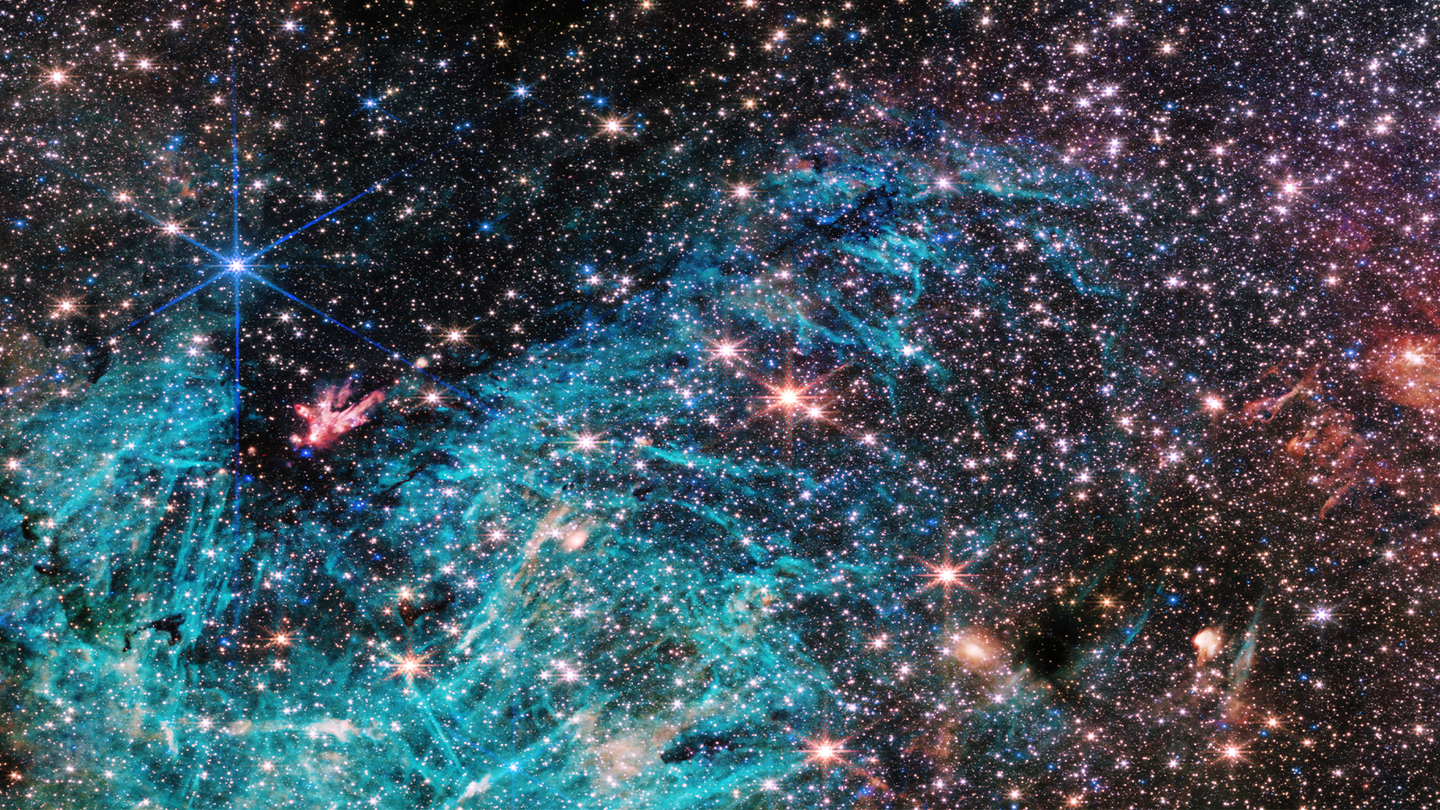Chaotic region shines bright with 500,000 stars in new JWST image
Just in time for Sagittarius season, the newly imaged Sagittarius C region includes some star-forming hotspots.

A new image from NASA’s almost two-year-old James Webb Space Telescope features new details of a portion of our galaxy’s dense center for the first time. The image includes some parts of the star-forming hotspot that astronomers are still trying to fully understand. The region is named Sagittarius C and is about 300 light-years away from Sagittarius A*, or the supermassive black hole at the center of our galaxy.
[Related: Gaze upon the supermassive black hole at the center of our galaxy.]
“There’s never been any infrared data on this region with the level of resolution and sensitivity we get with Webb, so we are seeing lots of features here for the first time,” observation team principal investigator Samuel Crowe said in a statement. “Webb reveals an incredible amount of detail, allowing us to study star formation in this sort of environment in a way that wasn’t possible previously.” Crowe is an undergraduate student at the University of Virginia in Charlottesville.

The image features roughly 500,000 stars and a cluster of young stars called protostars. These are stars that are still forming and gaining mass, while generating outflows that glow in the midst of an infrared-dark cloud. A massive previously-discovered protostar that is over 30 times the mass of our sun is located at the heart of this young cluster.
The protostars are emerging from a cloud that is so dense that the light from stars behind it cannot reach the JWST. This light trick makes the region look deceptively less crowded. According to the team, this is actually one of the most tightly packed areas of the image. Smaller infrared-dark clouds dot the image where future stars are forming.
“The galactic center is the most extreme environment in our Milky Way galaxy, where current theories of star formation can be put to their most rigorous test,” University of Virginia astronomer Jonathan Tan said in a statement.
JWST’s Near-Infrared Camera (NIRCam) also captured large-scale emission from ionized hydrogen that is surrounding the lower side of the dark cloud. According to Crowe, this is the result of energetic photons that are being emitted by young massive stars. The expanse of the region spotted by JWST came as a surprise to the team and needs more investigation. They also plan to further examine the needle-like structures in the ionized hydrogen, which are scattered in multiple directions.
“The galactic center is a crowded, tumultuous place. There are turbulent, magnetized gas clouds that are forming stars, which then impact the surrounding gas with their outflowing winds, jets, and radiation,” Rubén Fedriani, a co-investigator of the project at the Instituto Astrofísica de Andalucía in Spain, said in a statement. “Webb has provided us with a ton of data on this extreme environment, and we are just starting to dig into it.”
[Related: ‘Christmas tree’ galaxy shines in new image from Hubble and JWST.]
At roughly 25,000 light-years from Earth, the galactic center is close enough for the JWST to study individual stars. This allows astronomers to collect data on both how stars form, but also how this process may depend on the cosmic environment when compared to other regions of the galaxy. One question this could help answer is if there are more massive stars in the center of the Milky Way, as opposed to on the edges of the galaxy’s spiral arms.
“The image from Webb is stunning, and the science we will get from it is even better,” Crowe said. “Massive stars are factories that produce heavy elements in their nuclear cores, so understanding them better is like learning the origin story of much of the universe.”
